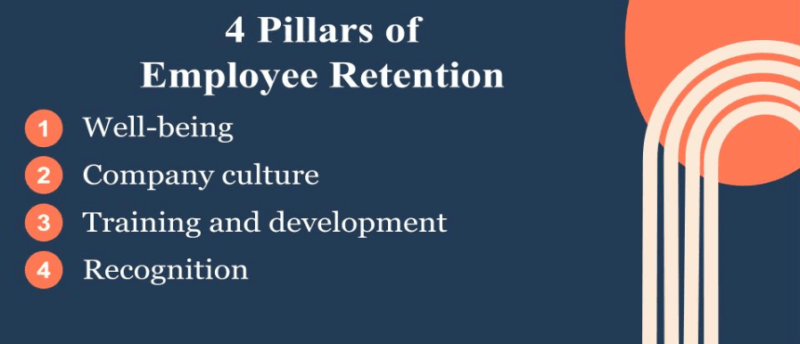L&D And Employee Well-Being
Employee well-being is an important aspect of modern-day corporate culture. According to Deloitte's employee well-being survey, 78% of organizations around the world believe that ensuring the well-being of employees is one of the drivers of organizational performance. Employee well-being deals with the following four main areas of human life: emotional, physical, social, and financial. It includes these areas but is certainly not limited to them alone. Learning plays an important role in ensuring employee well-being. In fact, it impacts each of the abovementioned areas of human life directly or indirectly. So, understanding the role of Learning and Development (L&D) in employee well-being is essential.
In this article, we'll understand the importance of employee well-being, then we'll talk about the connection between learning and well-being, the pillars of employee well-being, and lastly, we'll explore the role of L&D in employee well-being.
Importance Of Employee Well-Being
Employee well-being is an important aspect of today's highly competitive corporate world. There are several compelling reasons why organizations should focus on employee well-being. Some of them are given below:
- Enhanced productivity
- Reduced absenteeism
- Lower healthcare costs
- Improved employee engagement
- Higher retention rates
- Attracting top talent
- Reduced stress and burnout

The Connection Between Learning And Well-Being
Learning and Development programs are often associated with upskilling, reskilling, and career advancement. But their potential extends far beyond professional growth. Learning can have a positive impact on employee well-being, too. When employees are engaged in continuous learning and skill development, their overall sense of well-being improves significantly. This brings us to the highlight of the article: the role of L&D in employee well-being.
Role Of L&D In Employee Well-Being
Let's explore the different ways in which L&D contributes to employee well-being.
Improves Job Satisfaction
When employees feel supported in their professional as well as personal development, they feel more fulfilled in their job roles. This satisfaction is a result of increased confidence, better opportunities, promotion, etc., that accompany skill development. All these factors promote employee well-being. Here's a detailed look at how L&D improves job satisfaction:
- Validates employee value
When you provide your employees with learning opportunities, it sends them a clear message that you value their growth and development. This fosters a sense of value and appreciation, thereby improving job satisfaction.
- Increases engagement
The level of employee engagement plays a crucial role in predicting performance, productivity, and job satisfaction. Employees with a higher level of engagement are more likely to be satisfied with their jobs. And L&D programs boost learner engagement by challenging them to get out of their comfort zone and encouraging them to acquire new knowledge and skills. This provides the learners with a sense of achievement and makes their work more interesting and fulfilling.
- Aligns with personal goals
Undertaking L&D programs that align with an employee's personal and career goals provides them with a sense of purpose and motivation. When employees see their aspirations mirrored in their organization's commitment to their development, it enhances their job satisfaction.
Reduces Stress
Acquiring new skills and knowledge can indeed be a powerful stress reduction tool and enhance employee well-being. Here's how:
- Boosts confidence and competence
L&D initiatives boost an employee's confidence by helping them increase their skills and knowledge. This newfound confidence and competence helps them tackle job-related challenges in a better way. It reduces anxiety and stress associated with uncertainty and inadequacy of information.
- Enables effective problem solving
Employees who are continuously learning new things are better equipped to handle and solve problems. This problem-solving ability helps curtail the stress induced by unresolved issues or tasks, thus promoting employee well-being.
- Promotes an adaptive mindset
Learning encourages an adaptive and flexible mindset. Employees who regularly take up L&D programs are more likely to view obstacles as opportunities for growth rather than thinking of them as unconquerable hurdles.
Promotes Resilience And Adaptability
Learning and Development enables employees to bounce back from setbacks and adapt to change. Employees can handle challenges well, adapt to uncertain situations when required, etc., without having a drastic impact on their well-being or productivity. L&D promotes resilience and adaptability among employees in the following ways:
- Skill diversification
By acquiring a range of skills, employees become more adaptable to different roles and responsibilities within the organization. This enables them to handle and adjust their mindset for new tasks and job roles instead of being panicked or stressed out.
- Learning from failure
Whether it's an assignment on learning from mistakes or a full-fledged course on lessons from failure, L&D encourages a culture of learning. It trains employees to learn from their mistakes rather than punishing them. This aspect better prepares them to handle adversity and change in a better way.
- Confidence in change management
Through corporate training, employees become familiar with the concept of change management, strategies, tools, and more. This knowledge prepares them for practical application, as well. It allows them to handle organizational changes more effectively and reduces the stress associated with transitions.
Fosters Work-Life Balance
Achieving a healthy work-life balance is a goal for many employees, especially in the post-COVID era. Employees have come to realize the fragility of life and now tend to focus on their work life and physical and mental well-being alike. L&D helps them achieve this balance and promote well-being in the following ways:
- Includes relevant topics
Topics like time management, goal-setting, balanced lifestyle techniques, productivity, setting the right priorities, etc., are great additions to L&D programs to promote work-life balance. They help employees manage both personal and professional aspects of life, thereby fostering well-being. When employees have theoretical knowledge and tips related to these skills, they can apply them in their work life and accomplish their tasks more efficiently, freeing up time for personal life.
- Offers flexible learning options
Nowadays, digital learning is taking the corporate world by storm. L&D programs offer flexible and convenient learning options, such as online courses or self-paced modules. This flexibility allows employees to fit learning into their schedules and reduce the tension between work and personal life, thus promoting employee well-being.
Career Growth And Development
Career growth and motivation have a great impact on an employee's mental state and well-being. With that said, career growth is intrinsically linked to L&D programs. Whether an employee wants a promotion or wishes to do their work more efficiently, acquiring new knowledge and skills is the first step in that direction. Let's explore how L&D programs contribute to employee growth and development:
- Provide a clear path to career advancement
L&D programs help provide a structured path for career progression. When employees can clearly see and understand these career progression opportunities, they feel motivated to achieve these milestones. L&D programs help them attain these goals by offering them support and guidance. In fact, as employees understand the connection between performance and advancement, they are further motivated and excited to excel in their current roles.
- Foster intrinsic motivation
Learning itself is a powerful motivator. When employees engage in L&D activities, they get to experience a sense of accomplishment and personal growth. It boosts their overall motivation level and job satisfaction, thus contributing to employee well-being.
Parting Thoughts
In today's competitive business world, ensuring employee well-being is a strategic necessity for organizations. It's a key factor in helping your employees be their best and positive selves to drive the business forward. And to foster employee well-being in your organization, L&D can work wonders. We've seen the positive role of L&D in employee well-being in this article. So, make sure to design relevant, learner-centric, and effective L&D programs to keep your employees happy, fit, and productive!


